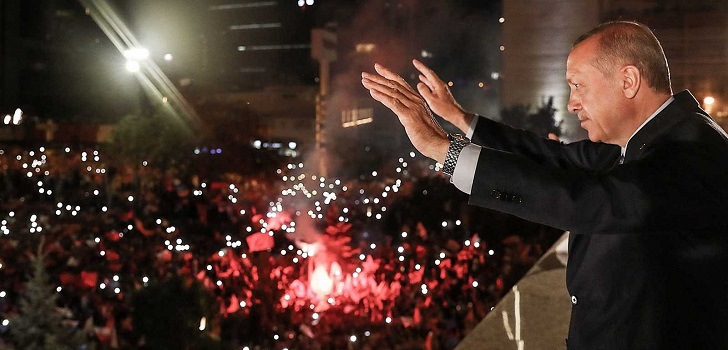2018, the year turkey became the star of sourcing in europe
Turkey has managed to overcome politic and economic contingencies to evolve into a leading partner of fashion European companies for near-sourcing.

Turkey ends a convulsive year. The Eurasian country, which has become one of the leading partners of European fashion for near-sourcing, has lived a half year of local and foreign political turmoil undergoing presidential elections and a crisis with the United States caused by the detention of an evangelic pastor which took place a year and a half ago.
The country’s president, Recep Tayyip Erdogan, advanced the presidential election which was initially programmed for 2019. In the polls, the mandatary was reelected as president with 52% of the votes despite the numerous reports issued against him. Erdogan, president since 2014, is accused of violations of human rights and freedom of the press.
To the political upheavals, economic ones were added too: high deficit and a growing inflation. Despite the measures of contention applied by the Turkish Central Bank, the country’s currency collapsed during 2018, dropping 40% of its value.
The Turkish lira collapsed and lost almost 40% of its value in 2018
The devaluation of the currency was, nonetheless, a new revulsive for fashion purchases around the country, which has already positioned itself as one of the growing near-sourcing poles. During the first half of the year, the purchases of Turkish fashion carried out by the European Union went up by 1.8%, reaching 10.62 billion euros. In the case of Spain, imports boosted up to 10.7%, reaching 1.88 billion euros during the same period.
According to the last available data, Turkey has consolidated the bronze of Spain’s main fashion suppliers, coming on the heels of number two, Bangladesh. The country is also the main proximity partner of Spanish fashion, distancing itself from Portugal by the day, which has lost its importance in the ranking. According to data from the Istanbul Textile and Apparel Exporter Association (IHKIB), the country forecasts ending 2018 with fashion exports valued in 18 billion dollars and raising them to 19 billion in 2019.
71% of the sector’s sales abroad are targeted towards a country from the European Union. During the last fiscal year, the main foreign clients of Turkish fashion were Germany, the United Kingdom and Spain.
Turkey is one of the twelve productive poles of Inditex, which operates with 177 suppliers and 1,459 factories in the country
Turkey is, in fact, one of Inditex’s twelve productive poles, operating with 177 suppliers and 1,459 factories in the country. Mango, for its part, works with 277 Turkish factories and has a logistics warehouse in the country. Other European groups who do their sourcing in Turkey too are H&M, working with 66 suppliers, Marks&Spencer and C&A.
Together with proximity, price has also become one of Turkey’s strongholds as sourcing pole. According to a report by McKinsey&Company, producing a pair of jeans is 3% cheaper in Turkey than in China, each pair costing 12.08 dollars.
Parallelly, the country is a growing market of consumption for the fashion sector thanks to a growing middle-class. Furthermore, despite the challenging politic and economic environment, the trust of Turkish consumers has kept on rising ever since 2017, after hitting rock bottom in 2016 on the occasion of the failed coup d’etat and terrorist attacks.
All in all, the devaluation of the Turkish lira has put the country’s sales in check, weighing down the purchasing power of Turkish people. The tough environment that the country is going through has also influenced its predictions of growth. After bouncing back by 7.4% in 2017, the International Monetary Fund (IMF) estimates that Turkey will grow by 3.5% in 2018 and barely 0.4% in 2019. Inflation, on the other hand, continues to grow at a quick pace due to the depreciation of the lira, standing at 15% in 2018 and 16.7% in 2019.


info@themds.com
Validation policy for comments:
MDS does not perform prior verification for the publication of comments. However, to prevent anonymous comments from affecting the rights of third parties without the ability to reply, all comments require a valid email address, which won’t be visible or shared.
Enter your name and email address to be able to comment on this news: once you click on the link you will find within your verification email, your comment will be published.